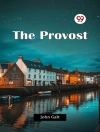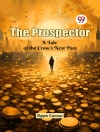In ‘A Woman at Bay, ‘ John R. Coryell weaves a compelling narrative that delves into the intricacies of motherhood, societal expectations, and personal fortitude. The novel employs a realistic literary style, rich with vivid descriptions and sharp dialogue, effectively encapsulating the essence of early 20th-century American life. Set against a backdrop of rapidly evolving societal norms, Coryell’s work invites readers to explore the tensions between tradition and progress as they follow the protagonist’s journey through trials of personal and familial conflict. John R. Coryell, an accomplished American novelist and journalist, drew upon his own experiences in navigating the complexities of gender roles and societal pressures to craft this deeply resonant story. His background in both literature and journalism shines through in his ability to create relatable characters who reflect the struggles of real women during an era of transformation. Coryell’s insightful observations about human nature and relationships render this novel a poignant commentary on the challenges that women faced during his time. Readers seeking a profound exploration of the human spirit and the societal confines that shape it will find ‘A Woman at Bay’ an indispensable addition to their literary collection. Coryell’s masterful storytelling and empathetic characterizations make this novel both a rich historical narrative and a timeless exploration of resilience.
About the author
John R. Coryell, a novelist whose work encapsulates the intrigue and dynamism of the late 19th and early 20th centuries, made a notable contribution to the literary world with his suspenseful storytelling. ‘A Woman at Bay’, a work that echoes the sentiments of its era, is a quintessential example of his ability to weave intricate narratives rooted in the societal fabric of his time. While not as widely recognized as his contemporaries, Coryell’s literary style often merged elements of mystery with a keen insight into the human condition, an approach that resonated with readers seeking both entertainment and reflection. His prose, characterized by a deft handling of suspense and an acute understanding of plot pacing, captured the complexities of his characters, often portraying strong female protagonists who grappled with and overcame formidable challenges. Although much of Coryell’s life remains shrouded in the annals of literary history, his contributions survive through his written work, offering a window into the storytelling craft of a bygone era. His novels are a testament to the genre of serialized novels, which mirrored the societal pulse of his time and provided an escape and source of fascination for a readership enthralled by the power of the written word.












